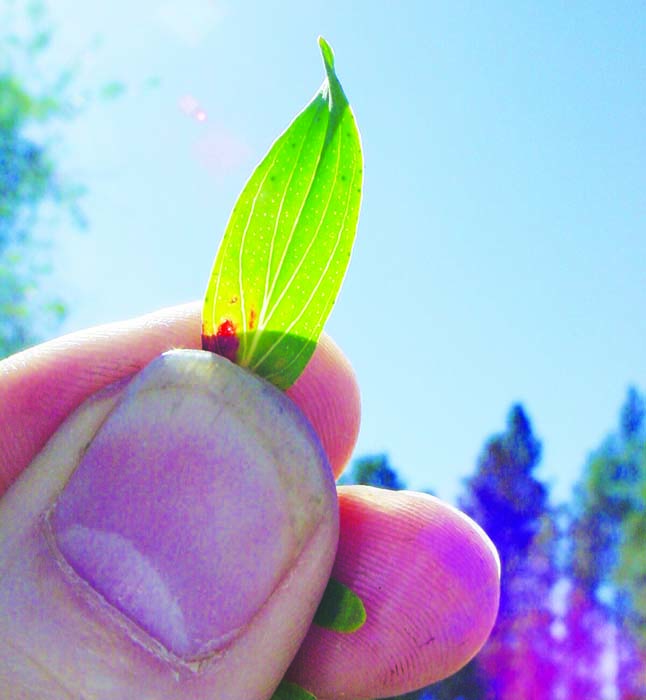Weed of the week: St. John’s wort
Published 12:38 pm Monday, April 17, 2023

- The perforations in leaves of St. John's wort can be seen when held to the sunlight or other light source.
The enemy
St. John’s wort (Hypericum perforatum L.). This native to Europe is quite often found here in the Pacific Northwest. This perennial plant reproduces by seeds and short, running roots. The stems are rust in color and woody in appearance. The leaves are oblong, less than one inch, and uniquely have perforations in them that when held up to the sun or light source can be seen.
The flowers have yellow petals and yellow stamens that are quite long and stick above the flower. The fruit that it produces are in small three-celled capsules that house numerous seeds.
The plant can be a medicinal herb, but can also cause burns, blisters and lesions on white-skinned animals. It is foraged on early in the spring, but later on in the summer it is not eaten and robs the soil of the nutrients and water.
In many cases this is the plant that is grown for medicinal reasons but most often escapes and becomes a massive problem in range, pastures and gravely sites. This plant can be found throughout the area, but I have not seen it in great quantities.
The defense
As this plant is a perennial, digging it up is not the best but can work when the plants are few in numbers and small in stature. Make sure that you get most of the root out of the soil and minimize the disturbance to the soil during the job.
The best control is by treating with Milestone, Opensight, Escort XP, or Telar XP herbicides. Spring or fall treatment is best, but if it catches you off guard then wait until the plant is budding.
There is also a very effective bio-control. The insect, Klamath beetle, was brought in to control it. I wouldn’t encourage anyone to grow the plant commercially around here.




